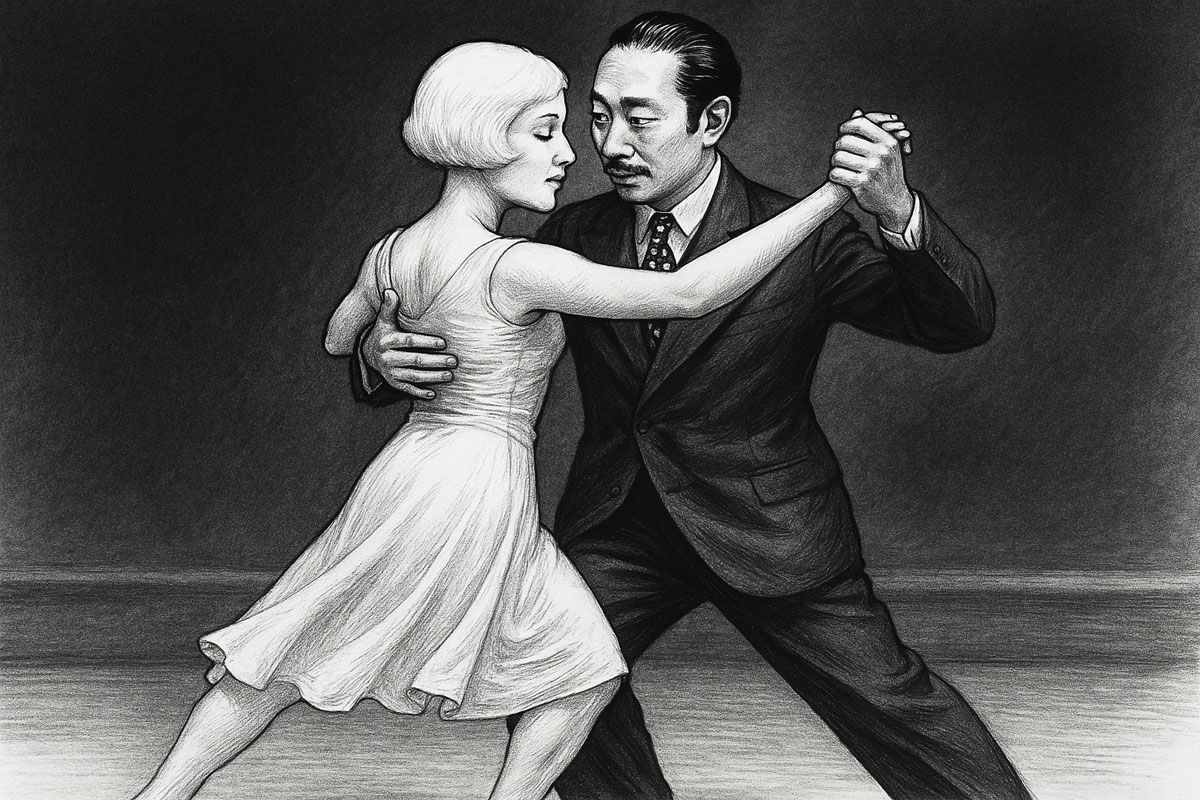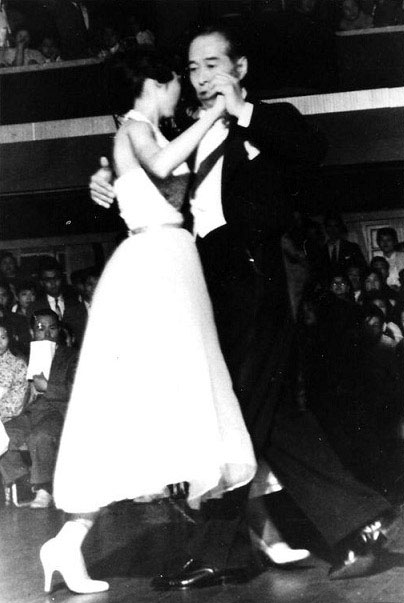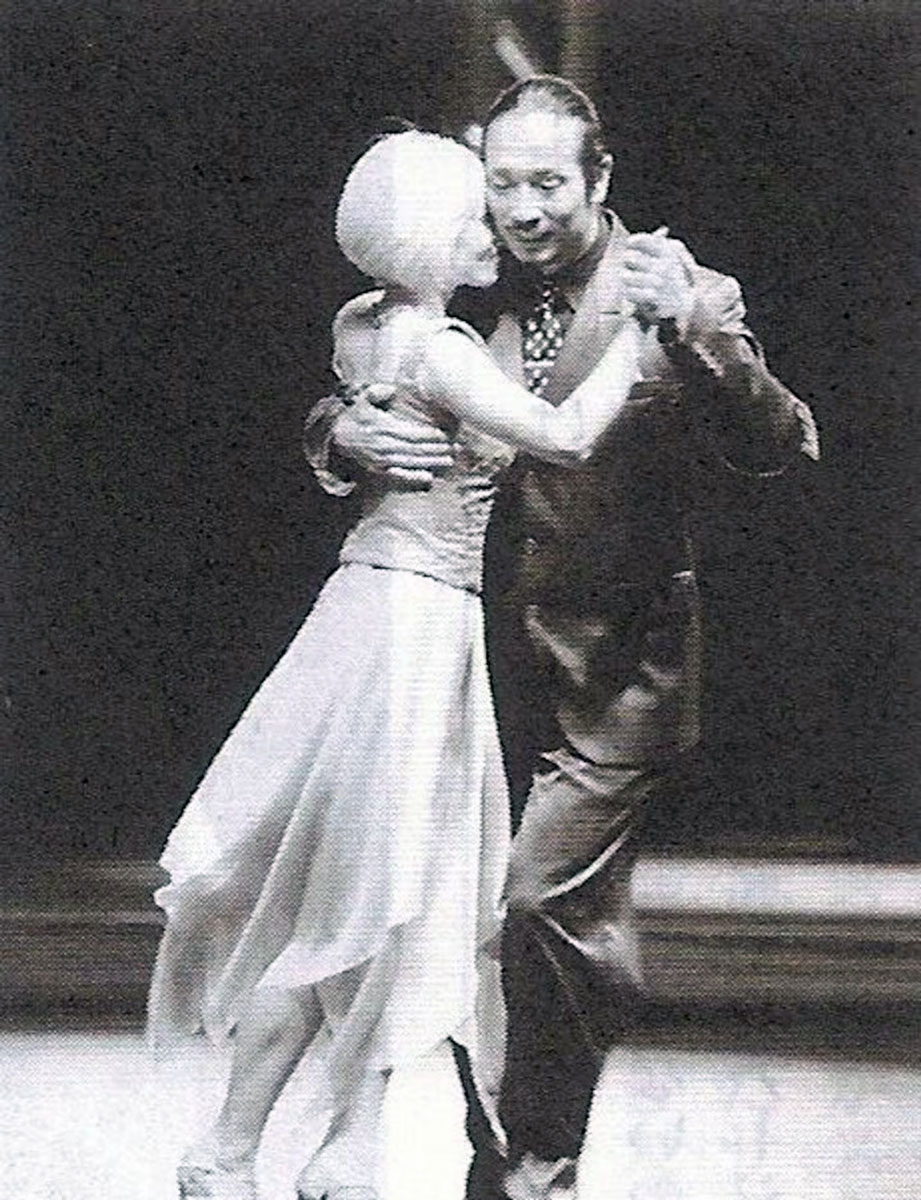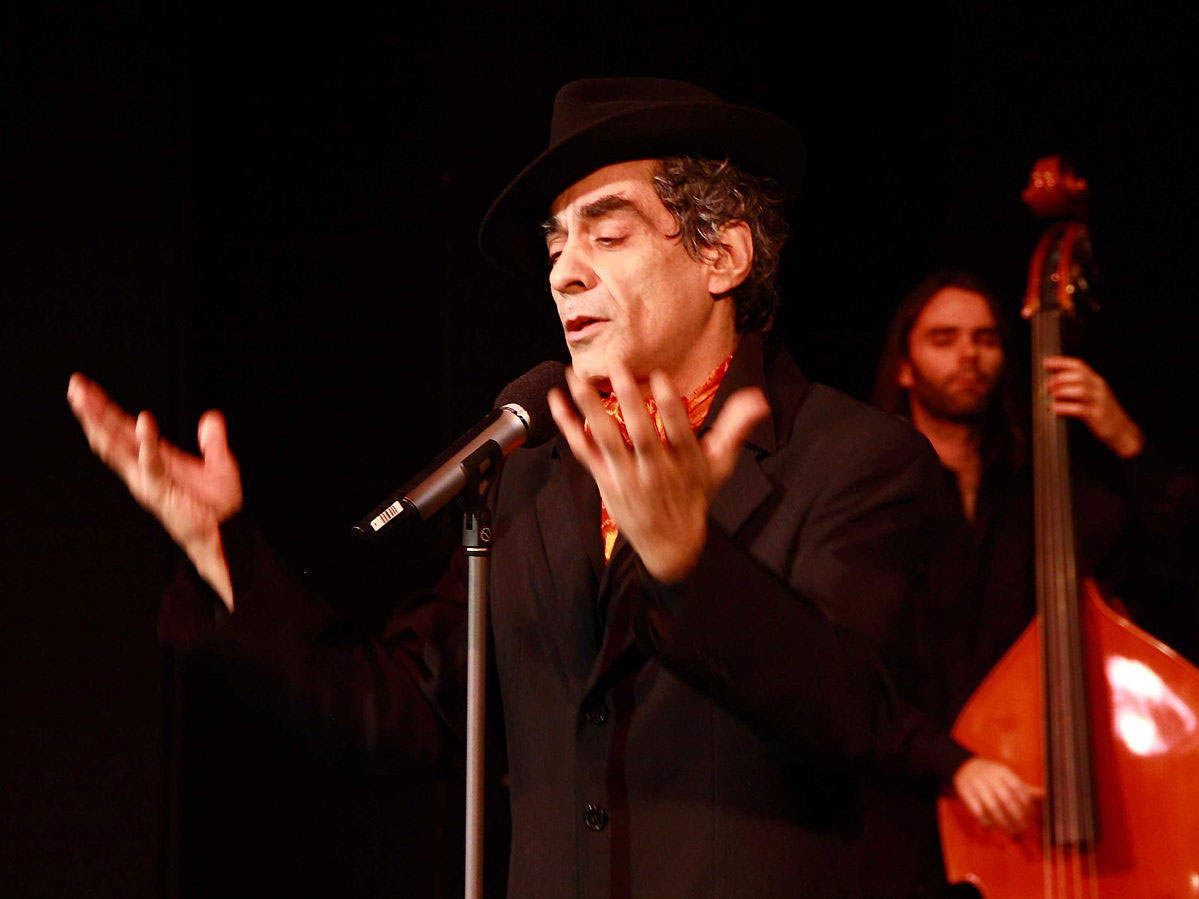
The Dance of Two Worlds
As Tango (1) gained popularity in Europe around the early 1900s, Paris became a significant hub for its evolution, where it was embraced by the elite and adapted into the European dance scene. Baron Tsunayoshi Megata (1896–1968), a Japanese aristocrat and grandson of the samurai Kaishu Katsu, encountered tango during his stay in Paris in the 1920s. Captivated by the dance, he frequented venues like the cabaret El Garrón (2), immersing himself in the tango culture. Upon returning to Japan in 1926, Megata introduced tango to Japanese society by establishing a dance academy in Tokyo, offering free lessons to the aristocracy. Due to the French labels on the records he brought back, many Japanese initially perceived tango as a French dance. Nevertheless, Megata's efforts laid the foundation for tango's popularity in Japan, which flourished, especially during World War II when jazz was banned, leading to a surge in local tango orchestras.

"A lo Megata": A Musical Tribute
In honor of Baron Megata's contributions to tango in Japan, Argentine
physician and poet Luis Alposta
(3) penned the lyrics for "A lo
Megata," with music composed by Edmundo Rivero
(4). The song was first performed
in Japan on May 29, 1982, commemorating the 14th anniversary of
Megata's passing. The song captures the essence of Megata's
transformation and his deep connection to tango. The rhythm and melody
reflect traditional tango elements, evoking the ambiance of early
20th-century dance halls. The lyrics narrate Megata's journey:
Baron Megata, in the year twenty,
boarded the ship bound for Paris,
and there, among tangos and the dolce far niente
(5)
the little Japanese became a dancer.
Slim and well-poised, with a Milonguero’s
(6) flair,
dressed like a duke, though already a baron.
He danced with Pizarro (7), and
one springtime,
packed up his records and returned to Japan.
And so he brought tango
to the land of the rising sun,
where he taught it for free,
asking nothing in return.
They say Megata
never charged a peso—
for love of tango,
and for being a gentleman.
He taught not only cortes and quebradas
(8)
but also gave lessons in honor and grace;
he knew the night and the early hours,
he flew airplanes, and more than one affair.
And perhaps now, as he stands among us,
while a Sony plays Chiqué (9)
someone in Tokyo, with elegant step,
dances a lo Megata, not knowing who he was.
A notable rendition of "A lo Megata" was performed by Japanese singer
Ikuo Abo, who began his career as a tango singer in the early 1960s.
Despite not speaking Spanish, he had mastered the language
phonetically, delivering performances praised for their authenticity
and emotional depth. Abo's interpretation of "A lo Megata," recorded
in 1987 with the orchestra of José Colángelo, stands as a testament to
his dedication to the genre. His rendition brings a unique cultural
perspective, blending Japanese sensibilities with the passionate
essence of Argentine tango.

A Personal Encounter: Daniel Melingo's Performance in Cologne
I had known tango for a long time—its captivating rhythms, its melancholy elegance. I had listened to the greats like Carlos Gardel (10), watched movies like Tango by Carlos Saura (11), and always felt a strong connection to the art form. But when I attended Daniel Melingo's (12) concert at the Cologne Philharmonie and heard him perform "A lo Megata," something new opened up for me. His gravelly voice and theatrical stage presence pulled me into a different story—one I hadn’t heard before. That evening, as he sang about the Japanese baron who carried tango across continents, I was struck by the realization of how art travels and transforms. It was a moving experience—suddenly, I wasn’t just listening to tango; I was hearing its journey, its echoes through time and space. That performance introduced me to the fascinating history of tango in Japan, and it left me with a sense of awe at how deeply interconnected our cultural histories truly are.

Footnotes
(1) Tango: Originating in the late
19th century in Argentina, is a dance and musical genre characterized
by its passionate and melancholic expressions. It embodies the fusion
of various cultures, including African, Indigenous, and European
influences, reflecting the diverse fabric of Argentine society.
go back
(2) Cabaret El Garrón: A renowned
tango cabaret in Paris during the early 20th century, El Garrón hosted
many Argentine musicians and dancers. It played a crucial role in
introducing tango to European audiences and shaping its global appeal.
go back
(3) Luis Alposta: A poet, lyricist,
and doctor, Luis Alposta is a celebrated figure in the tango world for
his modern yet nostalgic lyrics. He has collaborated with many notable
tango musicians and preserved the lunfardo tradition.
go back
(4) Edmundo Rivero: Famed for his
deep baritone voice, Edmundo Rivero was a quintessential tango singer
and guitarist. He founded the legendary tango venue "El Viejo Almacén"
in Buenos Aires.
go back
(5) Dolce far niente: An Italian
phrase that literally meaning “the sweetness of doing nothing.” It
refers to a pleasant, carefree idleness, a kind of relaxed enjoyment
of leisure and simply being. It's about savoring the moment without
needing to be productive.go back
(6) Milonguero: The term milonguero
traditionally refers to a dedicated tango dancer, often associated
with the golden age of tango in Buenos Aires. It also describes a
close-embrace style of dancing, emphasizing musicality, connection,
and intimacy on crowded dance floors.
go back
(7) Manuel Pizarro: An Argentine
tango musician, bandleader, and composer who was active in the early
20th century. He became especially well-known in Paris, where he led
tango orchestras during the time when tango was booming in European
high society.
go back
(8)
Cortes and quebradas: Literally meaning "cut and break", they are
traditional movements in Argentine tango dancing.
go back
(9)
Chiqué: A famous instrumental tango composed by Ricardo Luis Brignolo
in 1920.
go back
(10) Carlos Gardel: Often
referred to as the “king of tango,” Carlos Gardel’s voice and persona
are iconic symbols of the genre. His tragic death in a plane crash in
1935 cemented his legendary status.
go back
(11) Carlos Saura: A Spanish
filmmaker known for visually rich musical films, Carlos Saura explored
tango in his 1998 film Tango, blending narrative and dance. His work
often bridges the gap between documentary and fiction.
go back
(12) Daniel Melingo: A former
rock musician turned tango innovator, Daniel Melingo brings a gritty,
theatrical edge to the genre. His style fuses traditional tango with
modern influences and a bohemian spirit.
go back